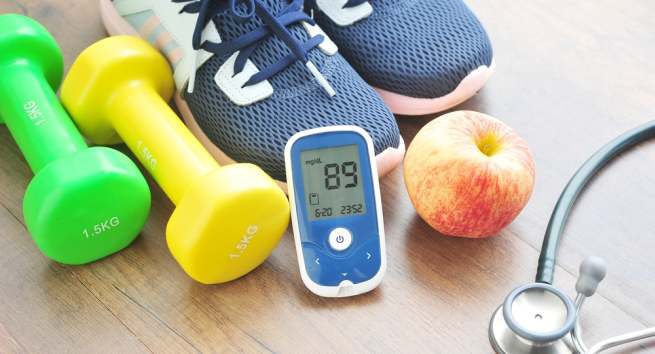
International Day of Happiness is on March 20th. In light of this event, Diabetes Queensland has recently written about exercise in the pursuit of happiness. The physical benefits of exercise in diabetes are well known but physical activity can have benefits for mental health too.
To read more about Diabetes Queensland’s recommendations for getting your ‘happy-fix’ through exercise follow this link: https://www.diabetesqld.org.au/media-centre/2019/mar/exercise-in-the-pursuit-of-happiness.aspx and share this by using #InternationalDayofHappiness on social media.

Type 2 diabetes is a largely preventable, chronic and progressive medical condition that results from two major metabolic dysfunctions: insulin resistance and pancreatic islet cell dysfunction causing a relative insulin deficiency. These occur due to modifiable lifestyle-related risk factors interacting with genetic risk factors.
Type 2 diabetes:
- Represents 85–90% of all cases of diabetes
- Usually develops in adults over the age of 45 years, but is increasingly occurring in younger age groups including children, adolescents and young adults
- Occurs when the pancreas does not produce enough insulin and/or the insulin does not work effectively and/or the cells of the body do not respond to insulin effectively
- Is more likely in people with a family history of type 2 diabetes or from particular ethnic backgrounds, including Aboriginal and Torres Strait Islanders
- For some the first sign may be a complication of diabetes, such as a heart attack, vision problems or a foot ulcer
- Is managed with a combination of regular physical activity, healthy eating and weight reduction. As type 2 diabetes is often progressive, most people over time will need hypoglycaemic medications and/or insulin injections in addition to lifestyle changes.
Although type 2 diabetes is the most common form of diabetes and increasing in prevalence in Australia, many cases remain undiagnosed. Earlier detection increases opportunities to reduce morbidity and mortality. The Australian Type 2 Diabetes Risk Assessment Tool (AUSDRISK) is used to predict an individual’s risk of developing diabetes.
Monitoring HbA1c and blood glucose levels
One of the main aims of diabetes treatment is to keep blood glucose levels within a specified target range, balancing dietary intake with activity, lifestyle and diabetes medicines. Target ranges may differ depending on age, duration of diabetes, the type of medication being taken and if there are any other medical problems.
Normal non-diabetic fasting blood glucose levels are between 4.0–5.9mmol/L. Target levels for patients with type 2 diabetes are between 6.0-8.0mmol/L fasting and between 6.0-10.0mmol/L postprandial.
A regular HbA1c should be taken at least twice a year, however, if the patient’s BGLs are unstable or a change in medication is required, the HbA1c should be taken every 3 months until stable. Standard targets for HbA1c level is between 6.5-7.0% or <=53 mmol/mol (range 48–58). However, individualised targets need to be considered taking into account factors such as the person’s age, daily activities, aspirations, likelihood of complications, comorbidities, occupation and history of hypoglycaemia.
Nutrition and physical activity
It is recommended that all adults do some form of physical activity of moderate intensity for at least 30 minutes per day on at least 3 days per week with no more than 2 consecutive days without exercise. Exercise can be divided into 3 x 10 minutes sessions each day. Exercise can have a significant impact on mood and mental wellbeing, not just on physical health.
People with diabetes should follow the Australian Dietary Guidelines:
- Eat regular meals and spread them evenly throughout the day,
- Eat a diet lower in fat, particularly saturated fat,
- If taking insulin or some other hypoglycaemic medications, snacks between meals may be needed.
Specific guidance is individualised and all people with diabetes should see an Accredited Practising Dietitian in conjunction with their diabetes team for individualised advice. Many diabetes educators can also provide dietary advice.
Eating the recommended amount of food from the five food groups will provide the nutrients needed to be healthy and prevent chronic diseases, such as obesity and heart disease.
Pharmacological therapies for type 2 diabetes
Currently there are five classes of hypoglycaemic medications commonly used in Australia for lowering blood glucose levels for people with type 2 diabetes. Oral medications are the biguanides (metformin), sulphonylureas, DPP-4 inhibitors, SGLT-2 inhibitors and thiazolidinediones (glitazones). Additionally, another class of drugs, GLP1 agonists, are available as weekly or daily subcutaneous injections.
First line treatment is diet and lifestyle advice, however if this has no effect on reducing a patients BGL and/or HbA1c metformin should be introduced. Review after a minimum of 3 months but no longer than 6 months and if targets are not achieved, increase the dosage (if tolerated) or add a second agent, which may be insulin. If targets are still not achieved, add or substitute with a third agent. The Royal Australian College of General Practitioners (RACGP) provides annually updated treatment options in its guidelines.
Preventing complications
Diabetes is a complex condition in that it can affect many parts of the body as well as have psychological impacts. The potential complications of diabetes are the same for type 1 and type 2 diabetes.
- Heart attacks and strokes are up to four times more likely in people with diabetes
- Diabetic retinopathy and potential vision loss affects one in six people with diabetes
- Kidney damage is three times more common in people with diabetes
- Amputations are 15 times more common in people with diabetes
- Depression, anxiety and distress occur in more than 30% of all people with diabetes.
Early diagnosis, optimal treatment and effective ongoing support and management reduce the risk of diabetes-related complications.
Eye care
Diabetic retinopathy is a common complication of type 2 diabetes. Glaucoma, cataracts and other disorders of the eye occur earlier and more frequently in people with diabetes. Good BGLs and regular comprehensive eye examinations are recommended so that changes can be detected and treated early, greatly reducing the risk of developing diabetic retinopathy. People who have diabetes should have their eyes checked from when diabetes is first diagnosed, and then regularly checked every two years.
Foot care
Having diabetes can increase the risk of foot ulcers and amputations. Poor glucose control can cause nerve damage and reduced blood supply to the extremities. People with diabetes should perform daily self-checks to prevent serious complications. If any of the following are noticed, medical treatment should be sought that day:
- Ulcer
- Unusual swelling
- Redness
- Blisters
- Ingrown nail
- Bruising or cuts.
Medical treatment should be sought within 7 days if any of the following are noticed:
- Broken skin between toes
- Callus
- Corn
- Foot shape changes
- Cracked skin
- Nail colour changes.
Symptoms of nerve damage include:
- Numbness
- Coldness of the legs
- A tingling, pins and needles sensation in the feet
- Burning pains in the legs and feet, usually more noticeable in bed at night.
Signs of poor blood supply include:
- Sharp leg cramps after walking short distances or up stairs
- Pain in the feet, even at rest (often in the early hours of the morning)
- Feet feeling cold
- Feet looking a reddish-blue colour
- Cuts which are slow to heal.
Diabetes Australia provides guidance on categorising patients’ risk for developing of foot ulceration and amputation and elements to consider during a foot assessment. If at high risk, the patient’s feet should be checked every 3 – 6 months by a podiatrist or other relevant health care professional. Referral to a vascular surgeon or high-risk foot clinic should be considered when arterial insufficiency of foot ulceration is suspected.
The regular clinic check-ups should include looking at the following:
- Blood flow to the feet
- Sensation and reflexes
- Unusual foot shapes (including bunions, claw toes and hammer toes)
- Toenails
- Dryness, calluses, corns, cracks or infections.
People with diabetes who have misshapen feet and nerve damage are the more likely to develop:
- Ulcers from too much pressure over some areas of the feet
- More corns and calluses due to too much pressure on one area and can be avoided with some changes.

